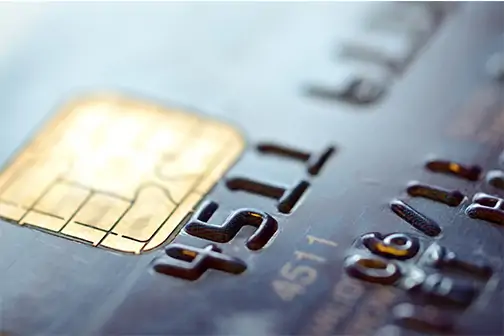

After the recent data theft of debit cards, the banking industry has tightened security aspects of cards and have urged customers to change passwords. Here are different kinds of card frauds and the necessary precautionary steps.
Skimming
This takes place when your card is inserted into an electronic device that copies and saves the key information in the magnetic strip of your card. This data is then used to clone your card to make purchases and transfers. Always ensure that your card is swiped in your presence. Do not use ATM machines whose card insertion slot appears odd or shaky, and opt for chip-based cards, as these have better security features.
Account takeover
When you unwittingly divulge personal information, such as communication/ permanent address, date of birth or details of your card like CVV number, etc., to a fraudster, the information can easily be misused. Never respond to emails, calls or SMSs seeking your card details or personal information. Always remember that banks will never ask for confidential information.
Phishing
This involves authentic-looking emails from seemingly legitimate institutions like banks or government agencies asking you for your confidential details. Many emails also come with links of bogus websites, which will convince you to provide sensitive information. Immediately contact your bank/ card issuer if you receive any such messages/ emails.
Keystroke capturing
Through this, you are duped to download malicious software, which then enables hackers to record key strokes used by you while typing your card details. These details allow them to make online transactions through your card. Install and update reliable anti-virus programs on your computer and smartphones to keep out spyware, malware, etc. Make online transactions at only those addresses starting with ‘https’ instead of ‘http’.
SIM swipe fraud
Fraudsters contact your mobile operator with a fake identity proof of yours and apply for a duplicate SIM card. The operator deactivates your original SIM and the thief then generates one-time password (OTP) on his own phone with the duplicate SIM to conduct online transactions. Immediately contact your mobile service provider if your phone goes out of service suddenly or you receive an email or SMS, mentioning a service request from you for a duplicate SIM.
Cards intercepted during transit
This is probably the oldest form of card fraud. Here, the fraudster will manage to get hold of your card before it actually reaches you. To check these frauds, banks usually deliver your card and its PIN through two separate couriers. Contact your branch officials or helpline number if you card/PIN does not reach within the designated time period.
The best way to protect yourself from online and ATM frauds is to exercise maximum possible caution. Make it a habit to change your PINs/passwords every 3–6 months and avoid online transactions at public Wi-Fi networks or cybercafés.
By Naveen Kukreja, CEO & Co-founder, PaisaBazaar.com
(Published in Financial Express on November 18, 2016)
Skimming
This takes place when your card is inserted into an electronic device that copies and saves the key information in the magnetic strip of your card. This data is then used to clone your card to make purchases and transfers. Always ensure that your card is swiped in your presence. Do not use ATM machines whose card insertion slot appears odd or shaky, and opt for chip-based cards, as these have better security features.
Account takeover
When you unwittingly divulge personal information, such as communication/ permanent address, date of birth or details of your card like CVV number, etc., to a fraudster, the information can easily be misused. Never respond to emails, calls or SMSs seeking your card details or personal information. Always remember that banks will never ask for confidential information.
Phishing
This involves authentic-looking emails from seemingly legitimate institutions like banks or government agencies asking you for your confidential details. Many emails also come with links of bogus websites, which will convince you to provide sensitive information. Immediately contact your bank/ card issuer if you receive any such messages/ emails.
Keystroke capturing
Through this, you are duped to download malicious software, which then enables hackers to record key strokes used by you while typing your card details. These details allow them to make online transactions through your card. Install and update reliable anti-virus programs on your computer and smartphones to keep out spyware, malware, etc. Make online transactions at only those addresses starting with ‘https’ instead of ‘http’.
SIM swipe fraud
Fraudsters contact your mobile operator with a fake identity proof of yours and apply for a duplicate SIM card. The operator deactivates your original SIM and the thief then generates one-time password (OTP) on his own phone with the duplicate SIM to conduct online transactions. Immediately contact your mobile service provider if your phone goes out of service suddenly or you receive an email or SMS, mentioning a service request from you for a duplicate SIM.
Cards intercepted during transit
This is probably the oldest form of card fraud. Here, the fraudster will manage to get hold of your card before it actually reaches you. To check these frauds, banks usually deliver your card and its PIN through two separate couriers. Contact your branch officials or helpline number if you card/PIN does not reach within the designated time period.
The best way to protect yourself from online and ATM frauds is to exercise maximum possible caution. Make it a habit to change your PINs/passwords every 3–6 months and avoid online transactions at public Wi-Fi networks or cybercafés.
By Naveen Kukreja, CEO & Co-founder, PaisaBazaar.com
(Published in Financial Express on November 18, 2016)